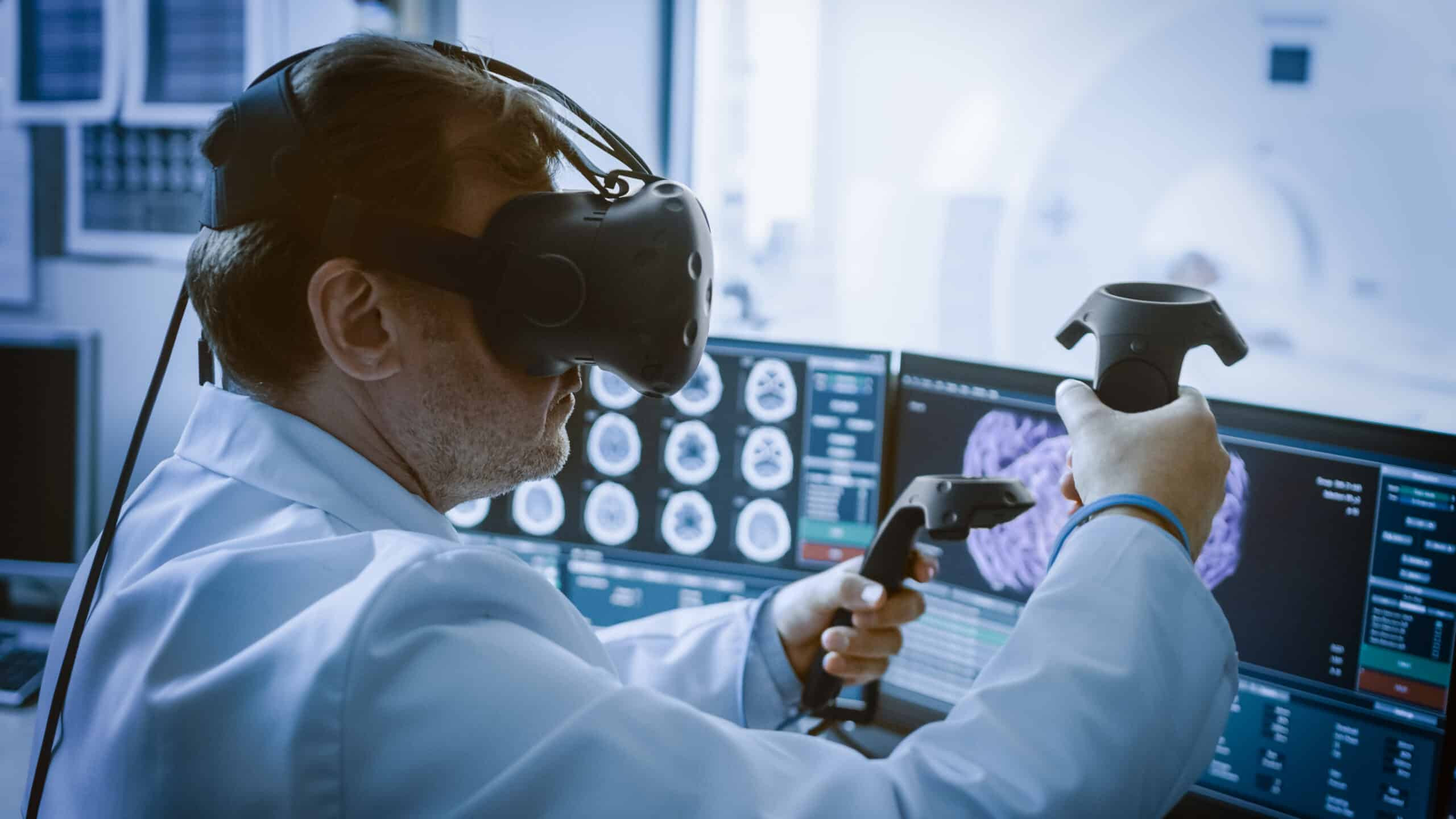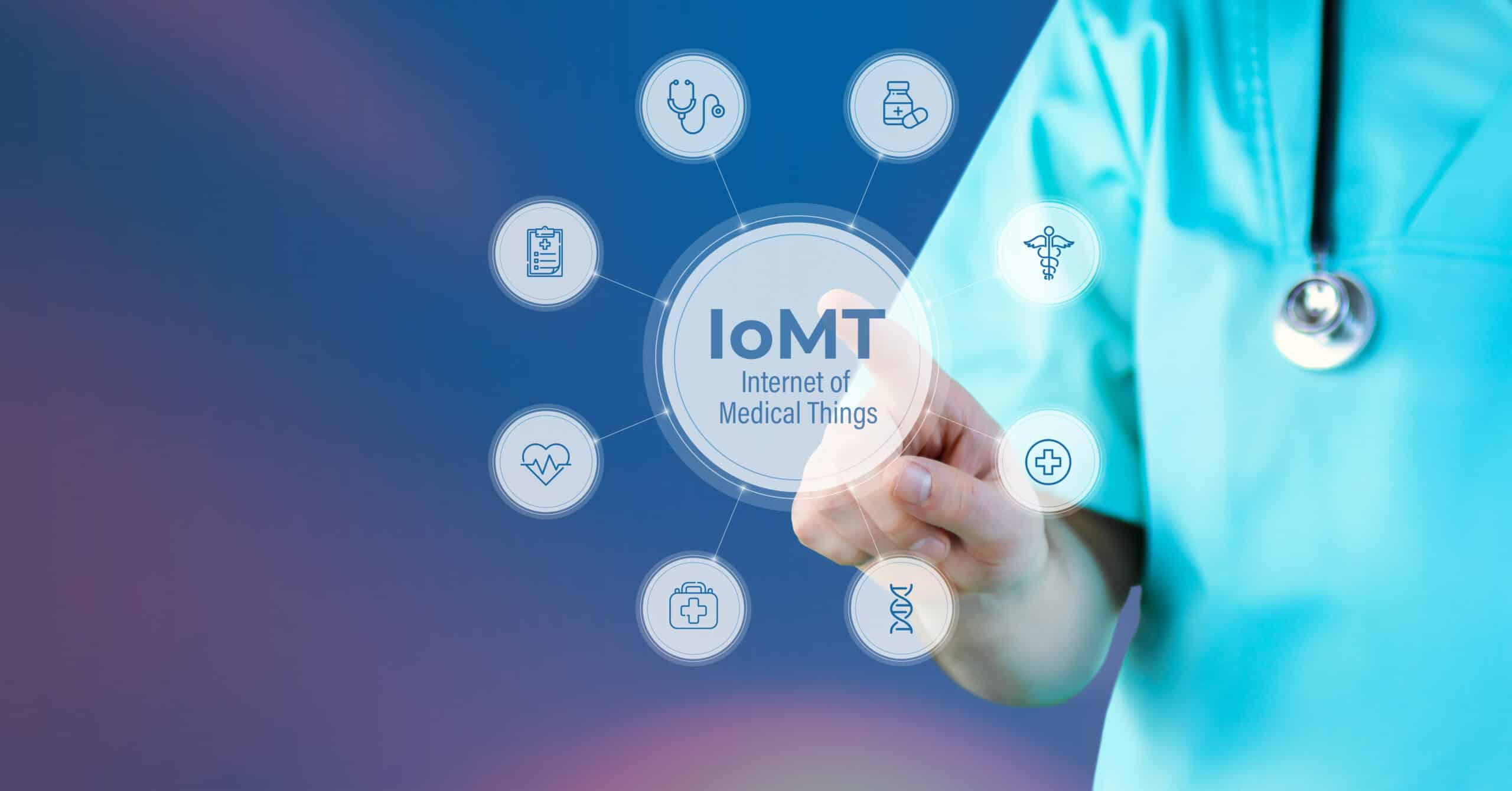Healthcare Technology Trends are revolutionizing patient care and medical practices, and pioneer-technology.com is dedicated to keeping you informed. As we approach 2025, understanding these technological advancements is crucial for healthcare professionals, investors, and technology enthusiasts alike. Dive into the future of healthcare with AI-driven diagnostics, telemedicine solutions, and digital health innovations, all designed to enhance patient outcomes and streamline operations.
1. Why Is Internal Communication Increasingly Important in Healthcare?
Effective internal communication is increasingly vital in healthcare for seamless coordination, staff engagement, and efficient operations, especially in protecting electronic health records. Addressing the complexities of connecting frontline workers, office staff, and various specialties requires streamlined and secure communication platforms.
1.1 How Does Efficient Communication Bridge Gaps for Better Healthcare Outcomes?
Efficient communication, facilitated by advanced internal communication platforms, ensures that critical information reaches the right people promptly, enhancing responsiveness to emerging situations and reducing confusion. These platforms simplify distributing regulatory updates and policy changes while integrating with existing IT infrastructure for added protection, ensuring compliance with healthcare regulations like HIPAA.
1.2 How Can Employee Engagement and Two-Way Communication Improve Retention in Healthcare?
Strong employee engagement driven by clear communication fosters a sense of belonging, making employees feel informed and supported, which reduces turnover. Implementing two-way communication systems allows administrators to gather valuable feedback, address concerns promptly, and demonstrate that staff voices matter.
 Efficient communication platforms for healthcare
Efficient communication platforms for healthcare
2. How Critical Is Cybersecurity in Safeguarding Healthcare Data?
Cybersecurity is critical in safeguarding healthcare data due to the increasing sophistication of cyberattacks targeting patient data and electronic medical records (EMRs). Robust cybersecurity measures are essential to protect sensitive information and maintain patient trust.
2.1 Why Is Data Security the Cornerstone of Healthcare Protection?
Data security standards mandated by HIPAA are essential for protecting patient data and EMRs, requiring continuous assessment and adoption of cutting-edge cybersecurity solutions. Healthcare professionals must address vulnerabilities introduced by telemedicine and wearable devices to secure these tools effectively.
2.2 How Does the Healthcare Sector Protect Patient Privacy in a Connected World?
Protecting patient privacy in a connected world requires substantial investments in advanced technologies to safeguard personal health information (PHI) while adhering to legal requirements. The rise of wearable technology and the Internet of Medical Things (IoMT) broadens the scope of patient privacy concerns.
2.3 What Are GDPR and HIPAA and How Do They Impact Global Data Protection Standards?
GDPR and HIPAA set global data protection standards, with GDPR extending to any organization handling data from EU citizens, necessitating stringent cybersecurity and data privacy measures. For U.S. providers serving international patients, GDPR compliance is a legal obligation to avoid severe penalties.
2.4 What Does the Future of Cybersecurity in Healthcare Look Like?
The future of cybersecurity in healthcare involves rapidly rising demand for robust security systems to safeguard sensitive patient data and adhere to stringent privacy regulations. Prioritizing advanced security solutions like cloud-based data storage, VPN protection, and network access management is crucial for healthcare IT professionals.
3. How Are AI and Machine Learning Transforming Healthcare?
AI and machine learning are revolutionizing healthcare through accurate diagnoses, personalized treatment plans, and streamlined efficiency, using data to improve predictive accuracy. This transformation includes early cancer detection and predicting patient outcomes.
3.1 What Impact Do AI and ML Have on Improving Diagnosis and Treatment?
AI and ML improve diagnosis by analyzing extensive healthcare data to identify patterns signaling conditions early, enabling better treatment plans and patient outcomes. AI also enhances personalized treatment by suggesting tailored therapies based on data from previous treatments and patient-specific information.
3.2 How Do AI and ML Lower Costs and Enhance Operational Efficiency in Healthcare?
AI and ML optimize healthcare operations by automating administrative tasks, reducing human error, and predicting resource needs, which prevents overstaffing and minimizes waste. These technologies enhance patient satisfaction by reducing wait times and improving the quality of care.
3.3 Do AI and ML Support or Replace Healthcare Workers?
AI and ML support healthcare workers by augmenting their capabilities through handling data analysis and offering recommendations, while human judgment and expertise remain essential. These technologies are viewed as tools that enhance medical professionals’ capabilities, not replace them.
4. What Role Do Digital Healthcare Services Play with Virtual and Augmented Reality?
Digital healthcare services utilizing virtual reality (VR) and augmented reality (AR) are transforming care, education, and efficiency, providing non-invasive training simulations and advanced treatment methods. These technologies enhance both professional training and patient care.
4.1 How Does Virtual Reality Improve Healthcare?
Virtual reality improves healthcare by providing immersive, simulated environments for training and treatment, enhancing surgical outcomes and reducing errors. Studies show that VR reduces discomfort for patients with conditions like low back pain and fibromyalgia by over 30%.
4.2 What Role Does Augmented Reality Play in Modern Healthcare?
Augmented reality (AR) enhances interactions between providers and patients by overlaying digital information onto the physical world, improving diagnostics, treatment planning, and surgical precision. AR-powered symptom checker chatbots and AI-integrated solutions assist physicians in refining diagnoses.
 VR applications in healthcare
VR applications in healthcare
5. How Does Healthcare Technology and Communication Reduce Risks?
Healthcare technology and communication reduce risks by improving information sharing and management, preventing errors and delays, and enhancing patient safety. Advanced communication platforms allow critical information to reach the right people at the right time.
5.1 How Does Real-Time Communication Improve Coordination and Safety?
Real-time communication enhances safety and reduces risk by standardizing internal messaging systems, ensuring critical updates, safety protocols, and real-time information are consistently delivered to medical staff. This helps reduce confusion, eliminate delays, and enhance care outcomes.
5.2 Why Is Engaging Healthcare Workers Important for Reducing Risks?
Engaging healthcare workers reduces risks by keeping them informed, connected, and confident in their decision-making, decreasing medical errors and regulatory violations. Informed staff are more likely to adhere to policies and procedural changes.
6. What Is the Impact of Telemedicine and Remote Patient Monitoring?
Telemedicine and remote patient monitoring (RPM) offer accessible care by utilizing digital platforms for remote medical attention and continuous health metric tracking. These technologies enhance patient outcomes, reduce costs, and expand access to care.
6.1 How Does Remote Patient Monitoring Enhance Ongoing Care?
Remote patient monitoring (RPM) continuously tracks health metrics, medication adherence, and other data via wearable devices and mobile apps, enabling quick, informed decisions and preventing complications. This is especially beneficial for managing chronic conditions.
6.2 How Do Telemedicine and Remote Monitoring Transform Patient Outcomes and Reduce Costs?
Telemedicine and remote monitoring improve patient outcomes and reduce costs by enabling early detection of potential issues and providing timely virtual consultations, which prevent costly hospital visits. These technologies also empower patients by offering more control over their healthcare.
6.3 How Do Telemedicine and Remote Patient Monitoring Expand Access and Future Growth?
Telemedicine and remote patient monitoring expand access to care for those in remote areas and patients with mobility issues, while integrating AI and advanced data analytics for personalized care. This will likely lead to more targeted care based on individual health patterns and needs.
 Telepsychiatry for mental health support
Telepsychiatry for mental health support
7. How Does Automation of Administrative Processes Streamline Efficiency?
Automation of administrative processes enhances operational efficiency, minimizes errors, and frees up resources for care by automating tasks like scheduling, billing, and record management. Reducing human error and streamlining workflows are key benefits.
7.1 How Do Communication Platforms Support Automation in Healthcare?
Communication platforms support automation by integrating with automated systems, providing real-time notifications about important tasks, policy updates, and patient-specific information. This ensures staff stay informed and can promptly address administrative issues.
7.2 How Does Automation Enhance Staff Engagement and Compliance in Healthcare?
Automation enhances staff engagement by relieving healthcare specialists from repetitive tasks, enabling them to focus on patient care and improving job satisfaction and performance. Automated systems also support compliance by ensuring staff are updated on regulations and protocols.
8. Why Are Data Interoperability and Standardization Important for Healthcare?
Data interoperability and standardization are crucial for seamless data exchange between providers and systems, improving patient outcomes and ensuring smooth healthcare services. These enable better clinical decisions and diagnoses.
8.1 How Can Healthcare Systems Overcome Fragmentation with Data Interoperability?
Overcoming healthcare system fragmentation involves integrating disparate systems with newer technologies, reducing errors and costs associated with manual data transfer. Ensuring standardized communication improves coordination and efficiency.
8.2 How Does Data Interoperability Promote Health Equity?
Data interoperability promotes health equity by ensuring healthcare professionals across settings have access to the same patient information, improving continuity of care, especially in underserved areas. Telehealth services can integrate data into a patient’s central record.
9. How Can Digital Training and Upskilling Empower Healthcare Providers?
Digital training and upskilling empower healthcare providers by offering flexible, accessible learning environments that facilitate continuous professional development and adaptation to emerging technologies. This helps medical staff navigate modern healthcare’s complexities.
9.1 How Does Flexible, On-Demand Learning Benefit Healthcare Professionals?
Flexible, on-demand learning allows healthcare workers to access training and upskilling opportunities at their own pace, improving their understanding of medical procedures and compliance regulations. Professionals can stay current with expert-led courses without sacrificing patient care.
9.2 How Does Collaborative Learning and Peer Engagement Enhance Digital Upskilling?
Collaborative learning and peer engagement facilitate knowledge sharing, allowing professionals to connect, share expertise, and discuss medical cases in real-time, fostering a community of continuous learning. Discussion forums and live Q&A sessions broaden perspectives and refine clinical decision-making.
9.3 How Does Digital Training Increase Access to Continuing Education for Healthcare Providers?
Digital platforms increase access to continuing education by removing geographic and scheduling barriers, allowing healthcare providers to train from anywhere, improving healthcare systems and patient outcomes. Online certifications and workshops provide the flexibility needed by modern healthcare workers.
10. What Is the Impact of the Internet of Medical Things (IoMT)?
The Internet of Medical Things (IoMT) enhances care by facilitating real-time remote monitoring of patient health metrics, enabling continuous tracking of conditions and medication adherence without in-person visits. This technology improves patient outcomes and reduces hospital readmissions.
The IoMT involves interconnected medical devices, software, and applications that collect, store, and analyze health data via cloud platforms, which allows for timely interventions and personalized care plans.
 The IoMT in modern medicine
The IoMT in modern medicine
Staying informed about these healthcare technology trends is essential for stakeholders. Explore pioneer-technology.com for in-depth analyses, expert insights, and the latest updates on groundbreaking advancements that are shaping the future of healthcare.
Ready to dive deeper into the world of cutting-edge technology? Explore pioneer-technology.com for more articles and resources to help you stay ahead of the curve. Contact us at Address: 450 Serra Mall, Stanford, CA 94305, United States. Phone: +1 (650) 723-2300. Website: pioneer-technology.com.
FAQ Section: Healthcare Technology Trends
Q1: What are the top healthcare technology trends in 2025?
The top trends include AI and machine learning, telemedicine, cybersecurity, digital healthcare services (VR/AR), and the Internet of Medical Things (IoMT).
Q2: How does AI improve healthcare?
AI enhances diagnostics, personalizes treatment plans, automates administrative tasks, and improves operational efficiency, ultimately lowering costs and enhancing patient care.
Q3: What role does cybersecurity play in healthcare?
Cybersecurity is crucial for protecting patient data and electronic medical records (EMRs) from increasingly sophisticated cyberattacks, ensuring patient privacy and trust.
Q4: How does telemedicine improve access to healthcare?
Telemedicine expands access to care by enabling remote consultations and monitoring, reducing the need for in-person visits, particularly for patients in rural areas or with mobility issues.
Q5: What is the Internet of Medical Things (IoMT)?
The IoMT is a network of interconnected medical devices and software that collect and analyze health data, facilitating real-time remote monitoring and personalized care.
Q6: How can healthcare organizations improve internal communication?
Healthcare organizations can improve internal communication by implementing advanced communication platforms that ensure critical information reaches the right people promptly, fostering engagement and reducing errors.
Q7: What are the benefits of digital training for healthcare professionals?
Digital training offers flexible, on-demand learning opportunities, enabling healthcare professionals to stay updated on the latest medical practices and technologies, enhancing their skills and knowledge.
Q8: How does data interoperability improve healthcare?
Data interoperability allows for seamless exchange of healthcare data between providers and systems, improving patient outcomes, reducing inefficiencies, and ensuring smooth operations.
Q9: What is augmented reality (AR) and how is it used in healthcare?
Augmented reality (AR) overlays digital information onto the physical world, enhancing diagnostics, treatment planning, and surgical precision, improving patient interactions and outcomes.
Q10: How does automating administrative processes benefit healthcare organizations?
Automating administrative processes streamlines workflows, reduces human error, frees up resources for patient care, and enhances overall operational efficiency, improving job satisfaction and compliance.

